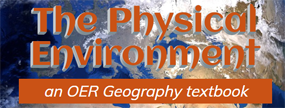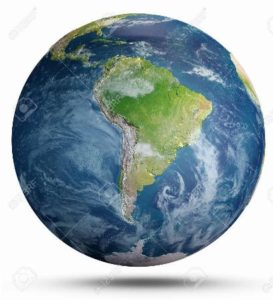
Contents | Atlas | Index | Google Earth | Glossary
Chapter 1: The Essentials of Geography


How do you See the World?
Geography touches every aspect of our lives. At its simplest, geography is concerned with where something is at, why it’s there, and how it relates to things around it. Geography influences where we live, affects our economic prosperity, has dictated the outcome of significant historical events, and shapes our local, regional, and global relationships with each other. This textbook focuses on physical geography and can answer many questions that you might have about the natural world and how it relates to your life. Ever wondered why present-day volcanoes occur on the west coast of the United States but not on the east coast? Why tornadoes seem to be unique to the United States? Why palm trees are found in Florida and pine trees in Maine? Where to go for a break from cold winter weather, or to escape a hot summer day? Physical geography can answer these questions, and more.
In this chapter you’ll be introduced to the discipline of geography and what it means to study the Earth from a geographic perspective. You will become familiar with the array of tools geographers possess to investigate the Earth system. We’ll conclude by looking at how geographers are well suited to address issues related to current trends in environmental change.
Learning Outcomes
By the end of the chapter you should be able to:
- Explain why geographers describe their discipline as a spatial science and uniquely qualified to tackle issues related to environmental change.
- Construct a diagram showing how hypotheses are developed and become theories in physical geography.
- Compare and contrast qualitative and quantitative map data.
Explain what a map projection is. - Choose the appropriate type and scale of map for its intended purpose.
- Use latitude and longitude to determine location.
- Explain how a global positioning system works.
- List and give examples of remote sensing techniques.
- Differentiate between standard time and daylight saving time.
- Explain how a GIS is used to solve problems in physical geography.
- Explain how models are used in physical geography.
- Calculate the mean and range to describe a set of data.
See if you are prepared for this chapter by Getting Ready for Chapter 1: The Essentials of Physical Geography.
You may view a list of chapter topics by clicking the “Topic Outline” link or go directly to the first topic by clicking “Continue”.